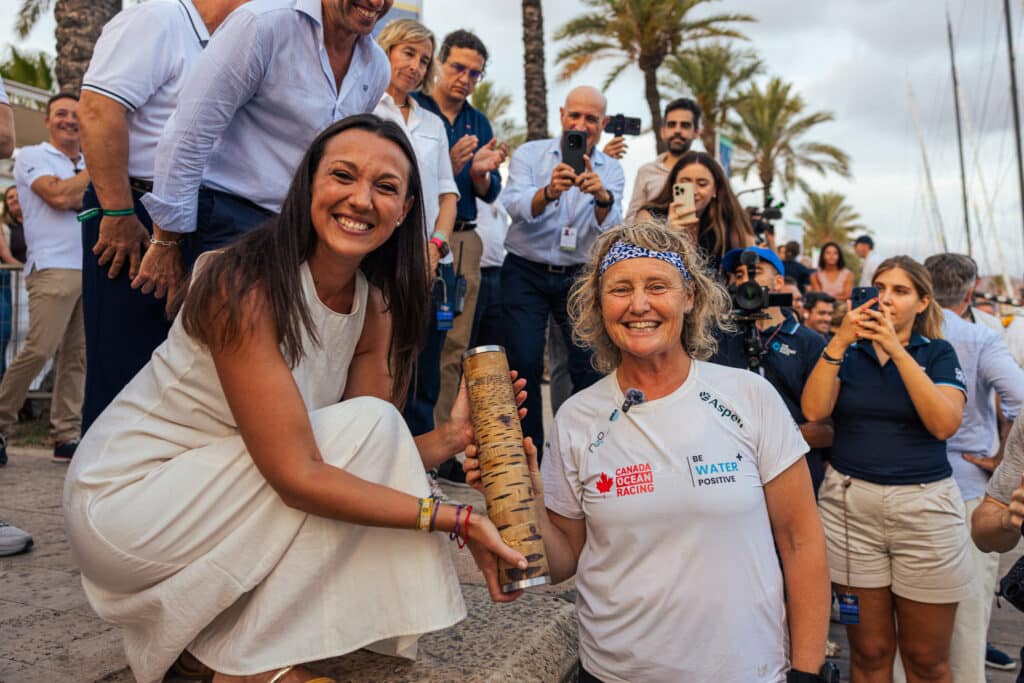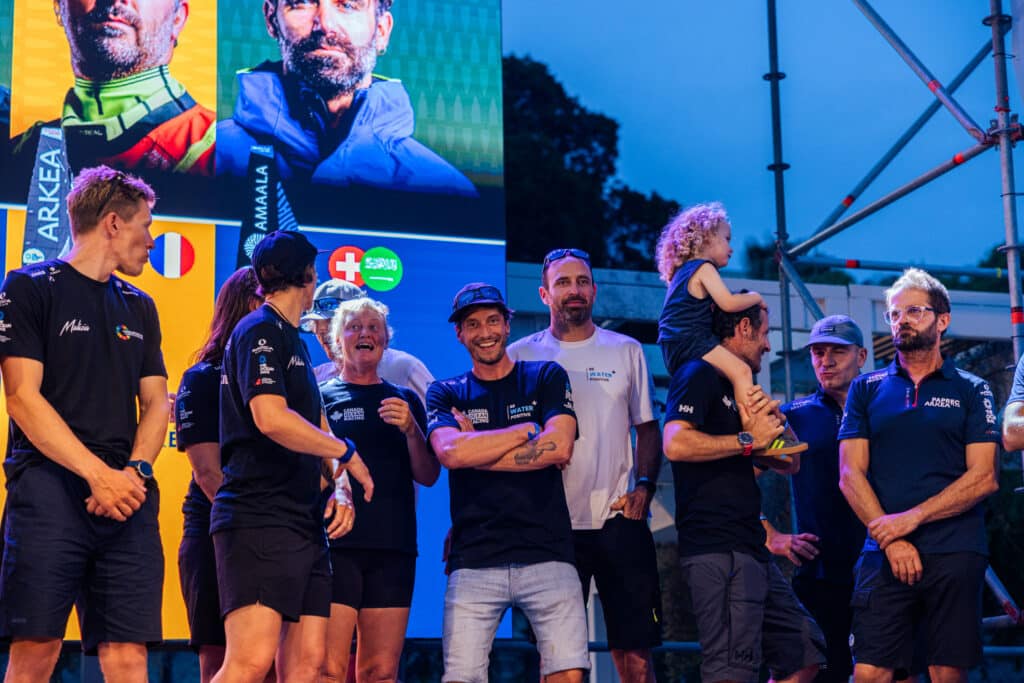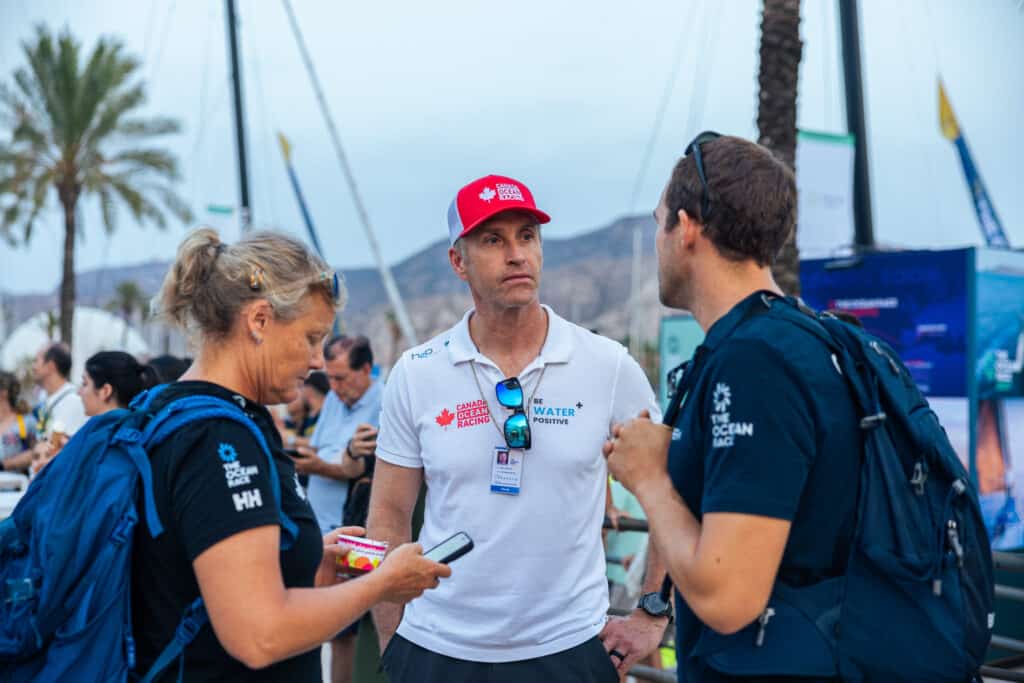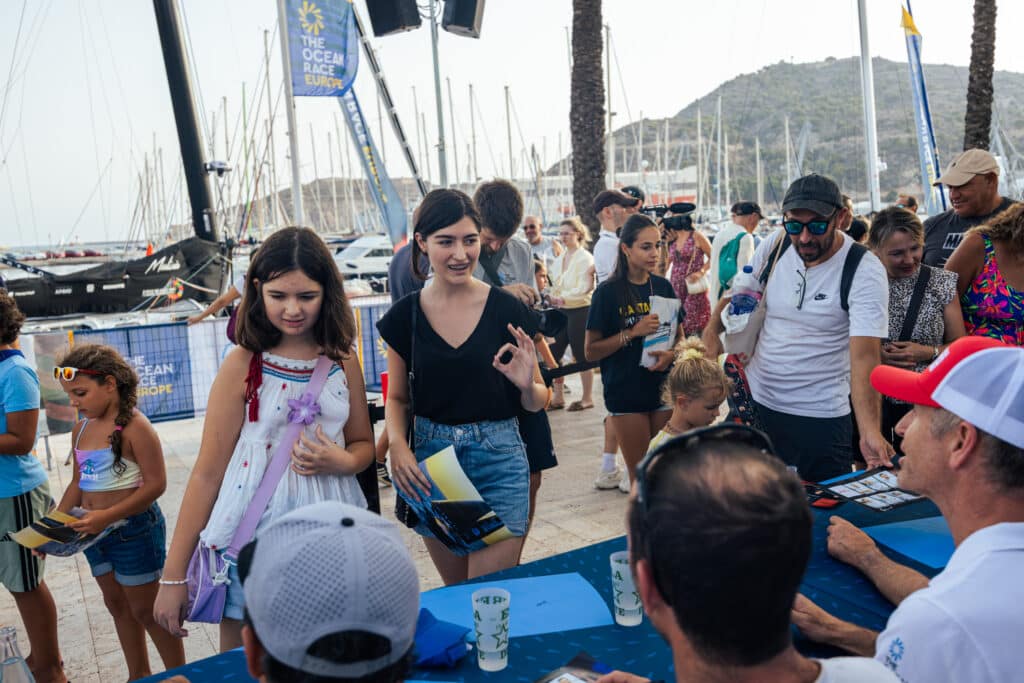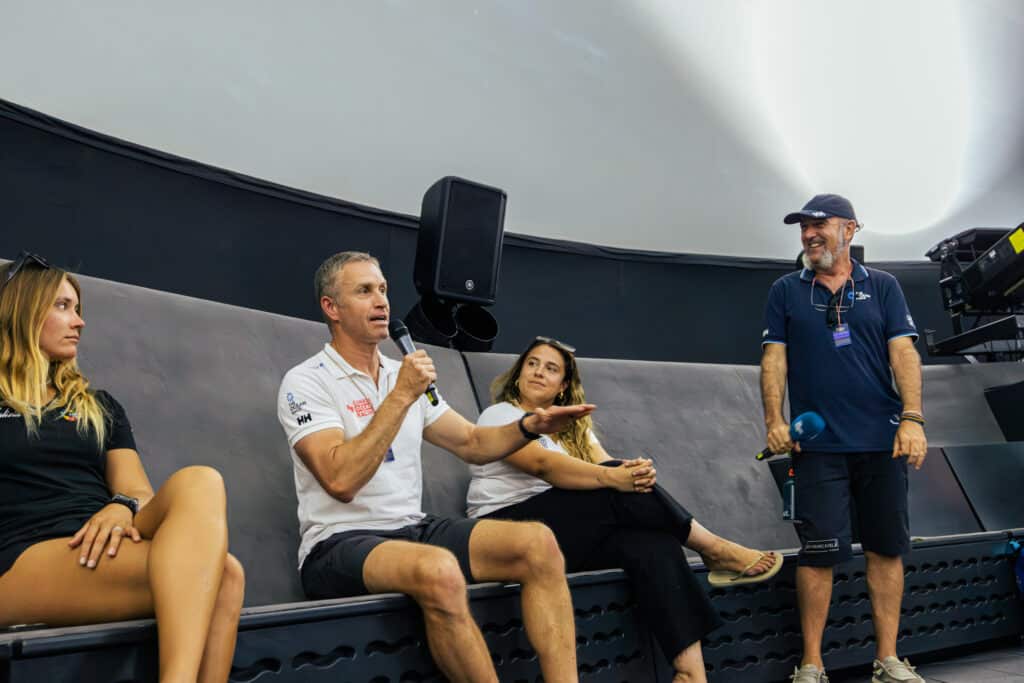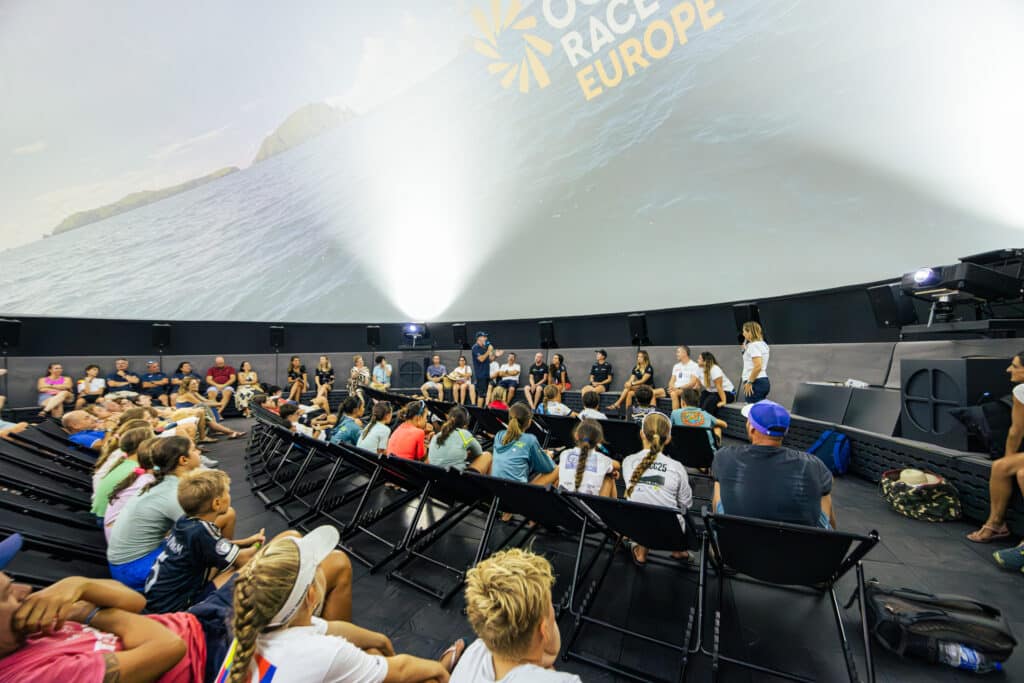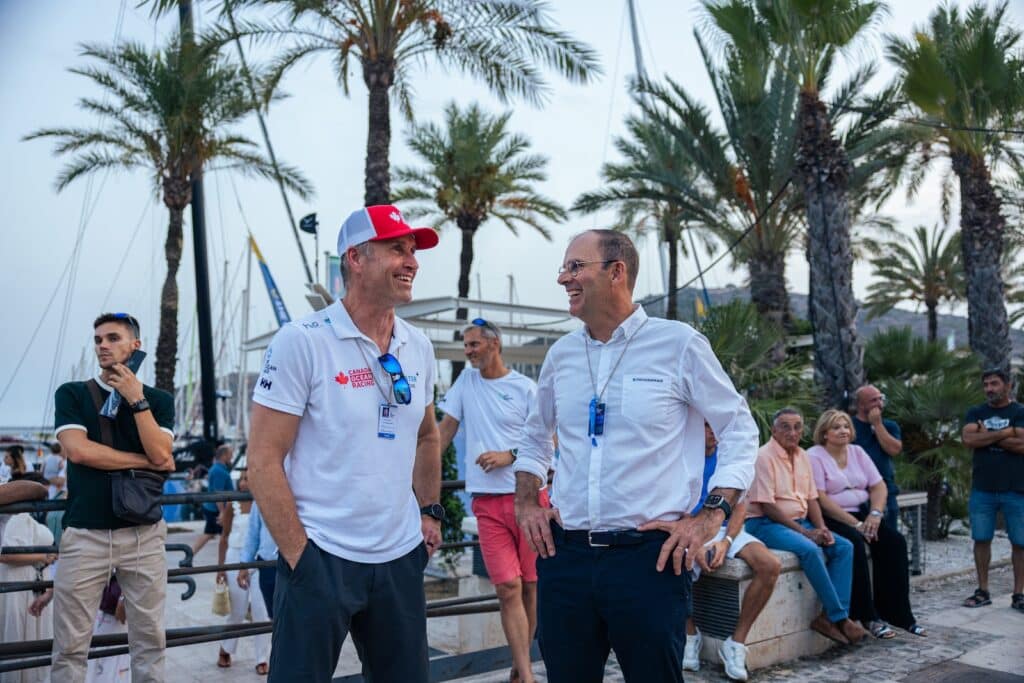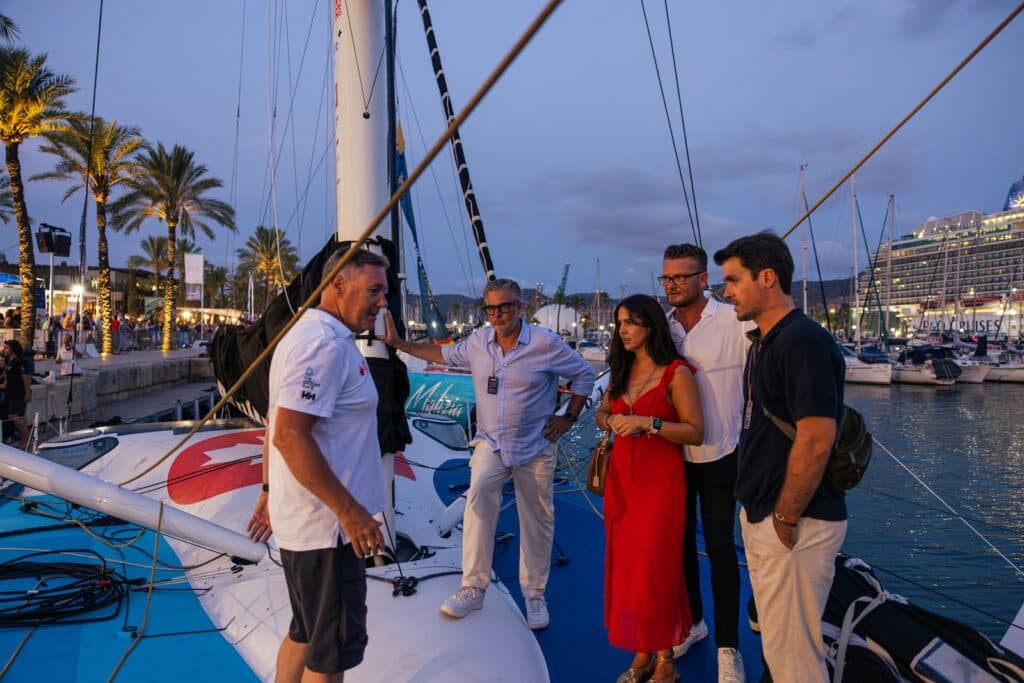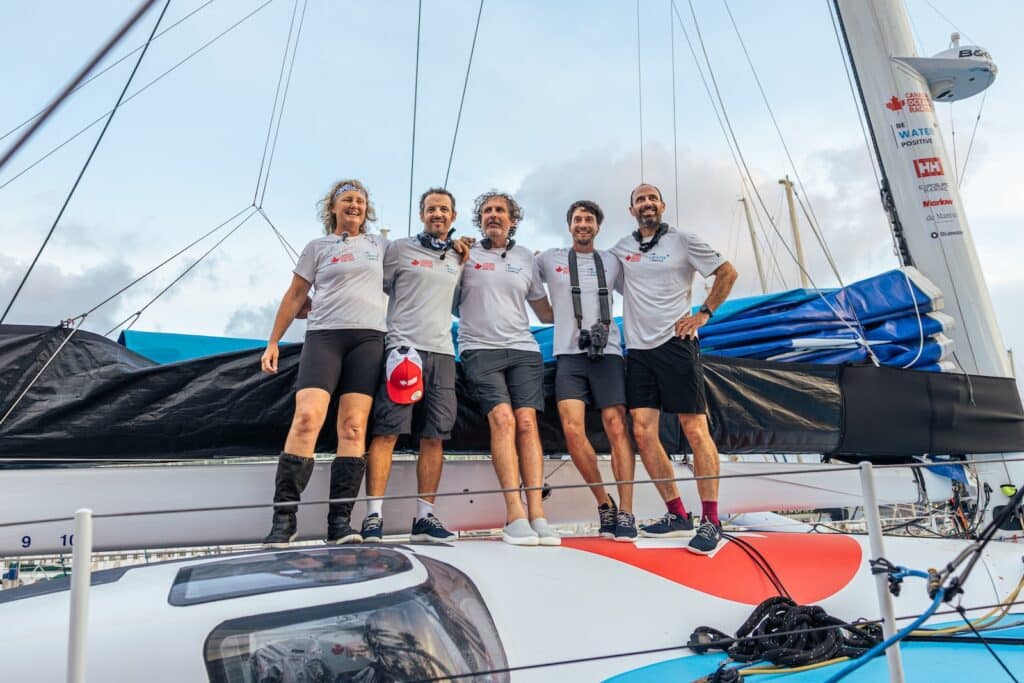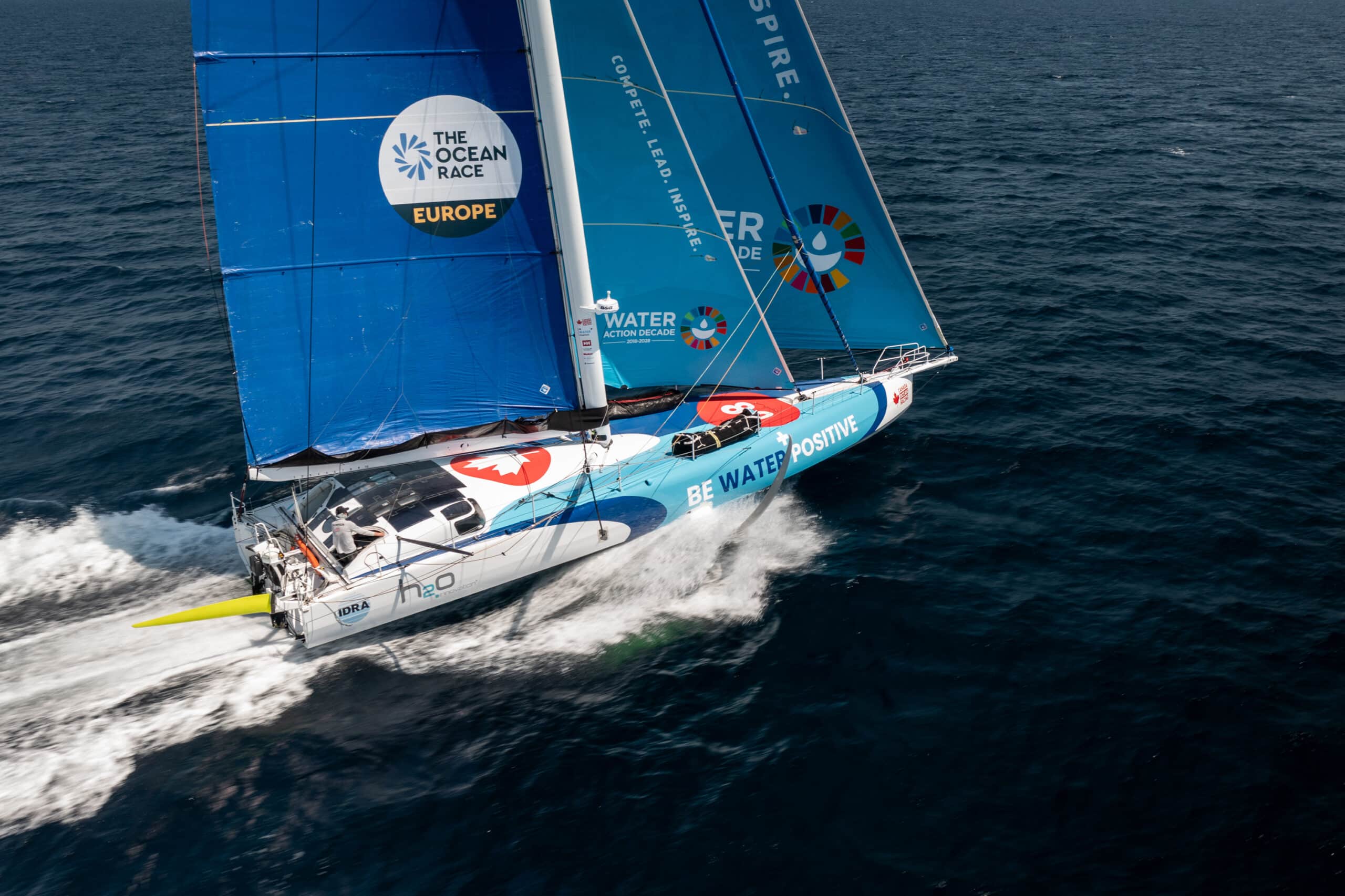
27 Aug Leg 3 Start: From Cartagena, Spain to Nice, France
Scott shares his views on why this could be a spicy leg and what he hopes to learn about the boat as they sprint from Spain to France
As Canada Ocean Racing – Be Water Positive heads into the next leg of The Ocean Race Europe, a “spicy” sprint from Cartagena to Nice, skipper Scott Shawyer is shifting gears.
“This leg is about starting to document the changes we’re making and how we’re sailing the boat,” Scott explains. “We’re beginning with the previous owner’s settings, and then seeing if we can improve on them. It’s a scientific process – we’ll run speed tests, validate whether we’ve made improvements, and document them properly so we can update our playbooks.”
That focus on process is rooted in what the team has learned over the first two legs. “We’ve found ways to get more speed, and we know we can be competitive with the other boats,” says Scott. “But we’re not consistent yet. That’s why we need to document properly and follow a steady process. It’s the only way to build repeatable performance.”
Preparation for Leg 3 has been a mix of technical tweaks and tactical planning. “We’ve spent a lot of time studying the weather, talking through our processes, adjusting different screen settings on the boat,” he says. “We’ll be taking notes on the fly, so we can really understand what we’re doing in the moment.”
And the weather? “Fruity,” Scott laughs. “Or spicy, as I’d call it. There’s a low-pressure system moving through, and then something coming out of France that could turn into a Mistral, so we’re expecting strong conditions coming into Nice. The tactical challenge will be navigating those systems and getting the timing right so we make the most of them.”
Amid the technical goals, Scott has a personal one too: “I’d like to not get seasick, or if I do, to get used to the motion of the boat! I want to have fun with the team and keep making progress on learning how to sail a foiling boat.”
On the performance side, the goal is clear: “Foil earlier, more efficiently, and more quickly. Competing and learning go hand in hand for me. I want to race, but I also want to really understand what we’re doing, document it, and follow a process that makes sure we’re getting better each time.”
The stopover in Cartagena offered a valuable pause. “It was great, but busy,” says Scott. “A good insight into how many electrolytes and fluids we’ll need to get through this next leg!” More importantly, it was a chance to reconnect with the team and set the strategy for what comes next.
“We’re thinking about the physics of what we’re doing, and how we document that. That’s what will help us improve – not just pushing harder, but being smarter, too.”
Check out the images below of our Cartagena stopover!

